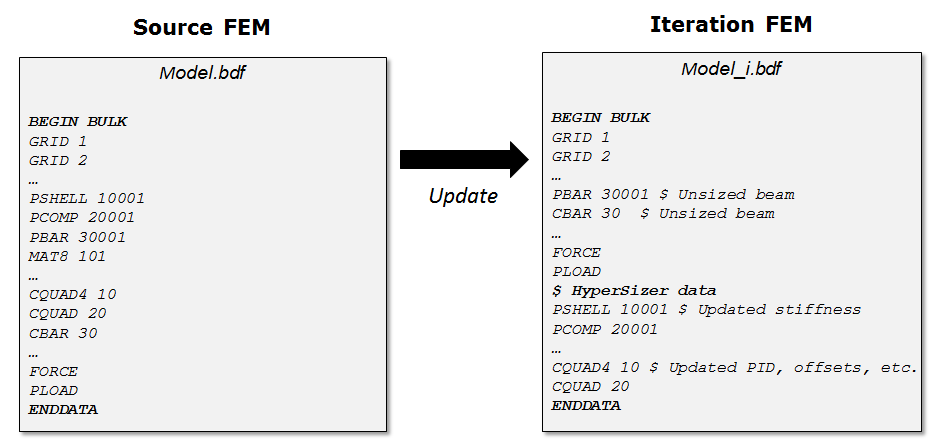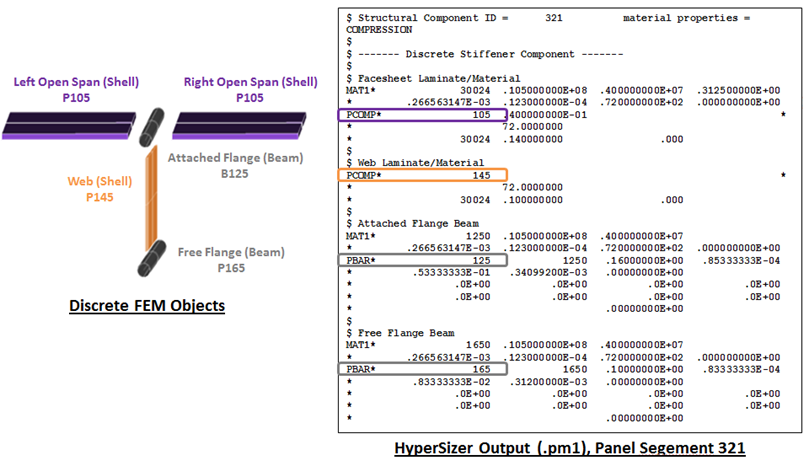
HyperSizer interacts with the finite element model by overwriting or replacing the original element properties with newly sized properties. The original (source) finite element model is updated to create a new "iteration FEM" (_i.bdf).
The contents of the iteration FEM reflect all the components in the project that have results. Components that do not have results are ignored.

For stringer segment components, the properties for each object associated with the stringer segment are updated. The figure below shows a breakdown of how a technique 3 stringer segment is updated. For more details on the update property format see the Shell Element and Beam Element sections. See Continuous Shell Export, Generalized Shell Export, Layered Shell Export, and Beam Export.

The Nastran iteration FEM is created by writing the HyperSizer generated FEM entities before the ENDDATA entry of the bulk data file. Care is taken to ensure that no duplicate elements/properties/materials are written.
If the source FEM already contains include statements, the iteration FEM will preserve the original file structure whenever possible. For example, if the source FEM has an include file that only contains loads and boundary conditions, this iteration FEM will reference the same file.
The Abaqus iteration FEM is created by writing the HyperSizer generated FEM entities before the first STEP option in the input file. Any duplicate elements/sections/materials are overwritten.
...
** HyperSizer data **
*Shell General Section
...
*Elset
...
*Step, Name=STEP_1_WING_PRESSURE
...
The Abaqus iteration FEM is created by writing the HyperSizer generated FEM entities before the solution processor (/SOLU) is entered. Any duplicate elements/sections/materials are overwritten. The modeling processor (/PREP7) must be exited normally (FINISH) before the solution processor is entered (see listing below).
/PREP7
...
! HyperSizer data
SECDATA
...
EBLOCK
...
FINISH
/SOLU
...
FINISH
